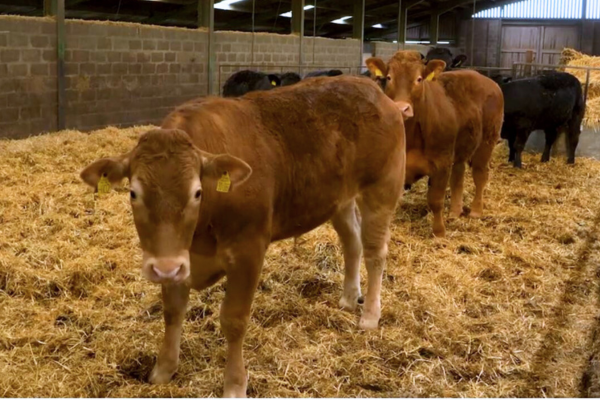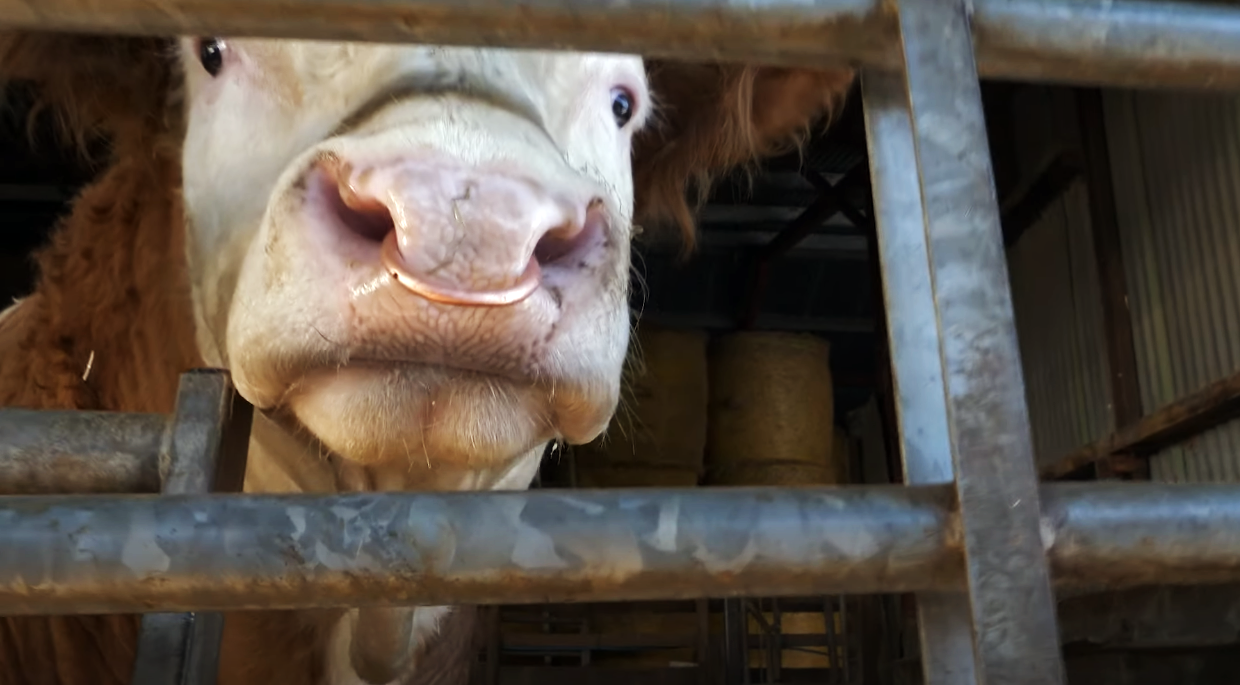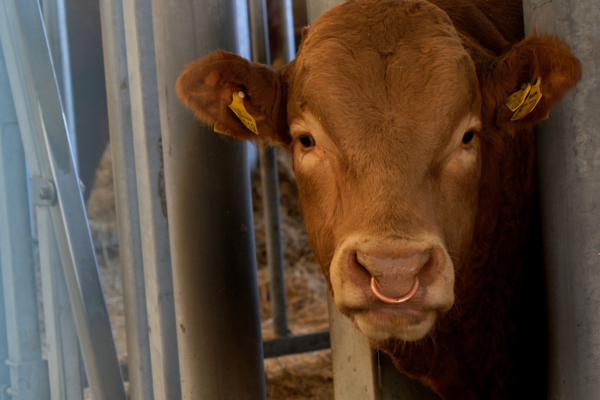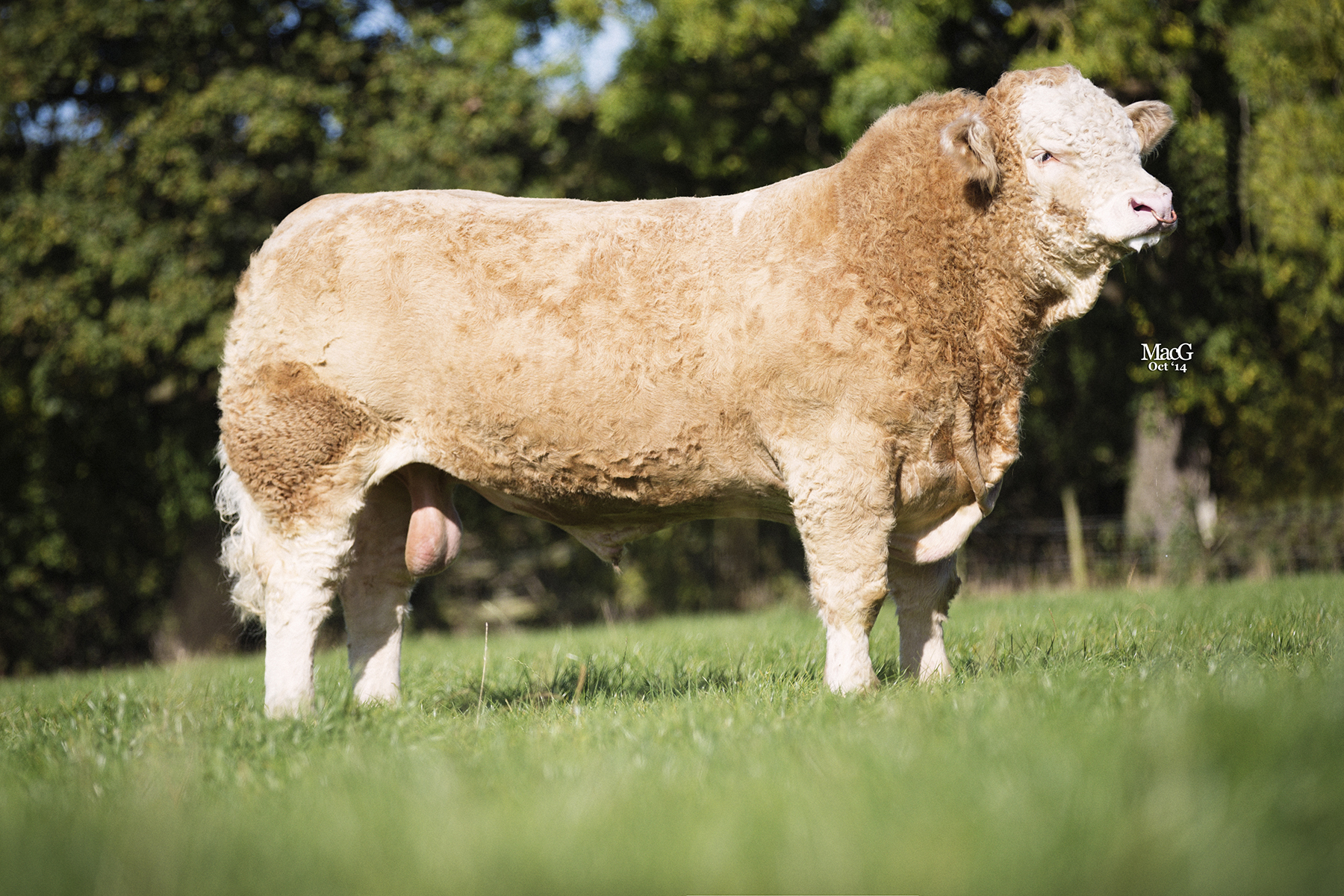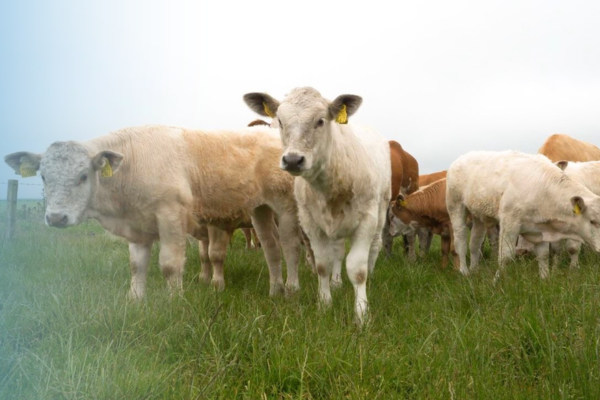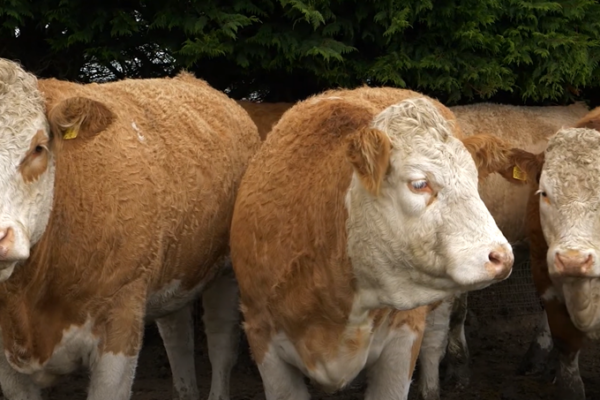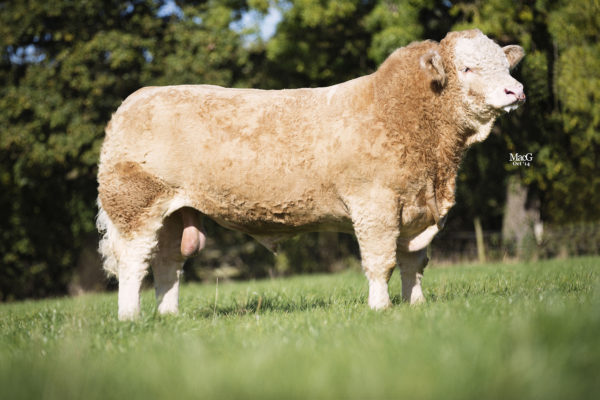Easter Howgate Study – Autumn Born Finishing Bulls
25 September 2025When Easter Howgate set out to ease housing pressure caused by an expanding spring calving herd, they found a unique solution. By establishing a “B Herd” of underperforming cows and implementing a synchronised AI programme using sexed male semen, they successfully transformed a previously underperforming group into a productive and valuable unit.
The use of sexed semen in the suckler herd provides a viable alternative to culling underperforming cows. Managing these cows as a ‘B’ herd for autumn calving spreads the workload and ensures a regular flow of finished cattle meeting market specifications.
Background
Easter Howgate runs two herds of Aberdeen Angus and Limousin-cross suckler cows, managed across both spring and autumn calving systems. The farm also maintains a separate herd of pure Luing cattle. In 2022, a dedicated autumn calving system was introduced to help relieve housing pressure caused by the expansion of the spring-calving herd. The aim was to establish a management group capable of turning otherwise underperforming cows into a productive and valuable unit.
The autumn herd is made up of cows and heifers less suited to the main spring-calving group. This includes animals with weaker genetics, lower fertility, poor conformation, or those ranking in the bottom 15% for weaning weights. Heifers too young to calve in spring are also included. Of the farm’s 370 suckler cows, 90 are currently in the autumn herd, with plans to increase this to 100 as selection pressure on the spring herd intensifies.
While most commercial suckler systems rely on natural service, Easter Howgate has taken a different approach by managing the autumn herd exclusively through oestrous synchronisation and artificial insemination (AI) using sexed semen.
The farm has successfully used AI in its spring calving herd for years, which inspired this venture for the autumn herd. Although this approach is not widely adopted in commercial herds, this method offers the farm greater control over fertility and allows the business to target calf quality, ultimately producing finished bulls at around 13 months old.
Breeding
Calving takes place outdoors in September, with cows and calves housed by mid-October. This allows them time to settle onto their winter ration before the breeding period begins. Insemination starts at the end of November, ensuring that service occurs under consistent and controlled conditions.
The autumn calving herd uses male sexed Aberdeen-Angus semen to produce high quality, efficient calves. Semen is selected for easy calving and low birth weights, while targeting genetics that deliver high growth and feed conversion rates. This ensures calves meet the performance targets and demands of the system.
To maximise fertility, Easter Howgate uses an adapted CIDR-synchronisation programme to synchronise the fertility cycle and ensure AI semen is present when a viable egg is available for fertilisation. Tail paint is used to aid heat detection, and all insemination and pregnancy scanning (35 days after 1st AI) is carried out by a trained technician. Each cow can undergo up to three insemination cycles if required.
This disciplined approach allows the farm to maintain a tight calving block, while ensuring even animals with suboptimal fertility are given multiple opportunities to conceive.
AI Programme
- On day 1, intra-vaginal progesterone devices (CIDR) are inserted, and cows are injected with gonadotrophin releasing hormone (GnRH).
- After 7 days, cows are then injected with prostaglandin.
- Two days later, the CIDR devices are removed, and cows are injected with pregnant mare serum gonadotrophin (PMSG).
- After a further 2 days, these animals undergo a double shot of male sexed Aberdeen Angus semen which occur 23 hours apart. The first AI straw is accompanied with an injection of GnRH.
- Sixteen days later, the CIDRs are reinserted (after being thoroughly disinfected and stored in a dry place).
- Five days later the CIDR devices are removed again, and tail paint is applied for accurate heat detection.
- Any individual seen bulling undergoes AI for a second time.
- Animals are scanned 35 days after 1st AI and CIDRs are reinserted in those which receive the 2nd
- Any empty cows at scanning restart the programme.
Conception Rates
Over three years, conception and calving performance has steadily improved.
| Insemination Year | No of cows entered into AI programme | Conception Rate (CR) |
|---|---|---|
| 2022 | 89 | 60% (53/89) |
| 2023 | 91 | 65% (59/91) |
| 2024 | 92 | 70% (64/92) |
Conception rates with sexed semen are typically lower than those achieved with conventional straws, with research suggesting a reduction of around 10–15%. In commercial conditions, a first service conception rate of 65% is generally considered strong performance. Easter Howgate’s results demonstrate a consistent upward trend over the past three years and improvements in nutrition and body condition score (BCS) management are expected to drive continued progress.
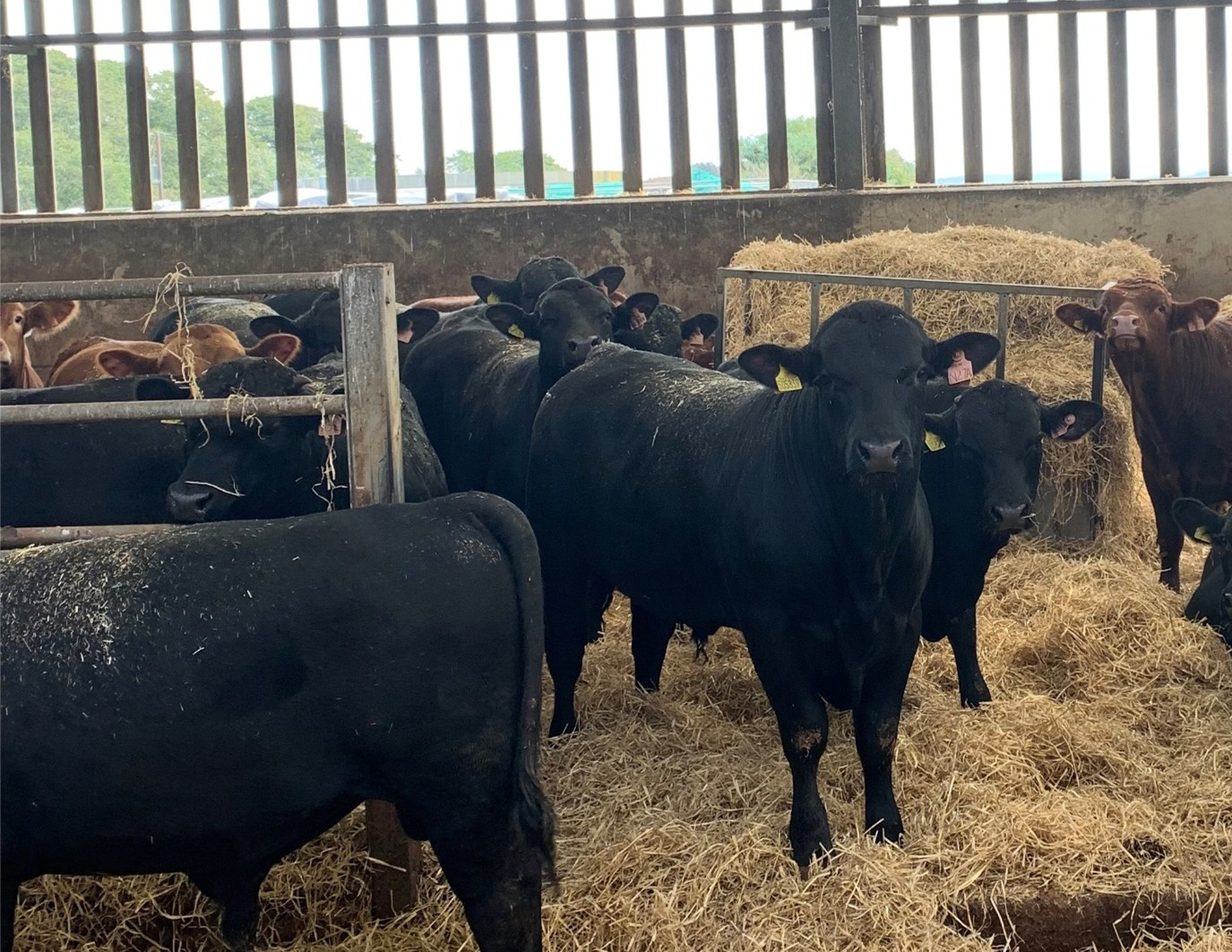
Costs
Although this system suits the business’ goals and restrictions, it is inevitably cost which dictates whether this is a commercial solution. The financial figures within this section are taken from 2023 season data for 91 cows entered into the program and 46 finished bulls. This is a rough guide to compare the use of a stock bull versus the Easter Howgate AI programme.
| Sire | Annual Cost | . | Calf Cost |
|---|---|---|---|
| Stock Bull | £2,394– capital, vet and med, feed and bedding* | 1 bull can sire on average 35 calves | £59/calf |
| AI (Easter Howgate CIDR-synchro) | £6,467 – semen straws, vet and med, technician time | 3 rounds per cow maximum £71/cow | £140/calf |
*Stock bull annual costs have been established presuming an upfront cost of £10,000, combined with a 6-year working life, siring 35 calves annually.
At face value, the AI programme appears significantly more expensive per calf compared to a stock bull. However, cost must be weighed against the short and long term benefits. Sexed semen enables targeted production of finishing bulls, improving sale value. AI also provides access to superior genetics from a range of sires, rather being limited to the traits of a single bull.
Calf Health
In recent years, Easter Howgate has implemented a farmer-led process of dynamic health planning, designed to drive continuous improvement through clear and achievable target setting. Historically, pneumonia caused high calf mortality rates in the autumn herd. Improved shed ventilation has since significantly reduced these losses. Today, autumn calves face far fewer health challenges, with pneumonia no longer a significant concern.
Calf Performance
Calves are managed intensively from an early stage, starting in December when they are offered ad-lib creep feed to support early rumen development and growth. By weaning in mid-April bulls are typically meeting an average weight of 310-320kg. They then transition onto an intensive barley-based diet, comprising barley, minerals, dark grains and molasses, provided at 10–15 kg per head per day on an ad-lib basis, with straw available at all times.
Growth performance is closely monitored, with animals being weighed on a monthly basis.
Entire bulls demonstrate a clear advantage with feed conversion efficiency when compared with steers or heifers. This efficiency means that for every kilogram of feed consumed, bulls are able to convert a greater proportion into lean tissue, driving faster and more economical growth using less resources. As a result, bulls typically produce heavier carcasses with superior muscle development, particularly across the high-value cuts.
Marketing for the Finishing Enterprise
The business uses Highland Meats as their processor as they value consistency, growth efficiency, and the eating quality associated with Aberdeen Angus genetics. Selling entire bulls at around 13 months ensures animals hit market specifications quickly, maximising turnover and freeing up shed space. Slaughter selection is based on weight, age and conformation.
The table below details the 2023 calf crop slaughter data.
| Number of calves sold | Average days on farm | Average DLWG | Average Finished weight | Average return per bull | Average Killing out percentage | Average Carcase Grade |
|---|---|---|---|---|---|---|
| 46 | 393 days (13mths) | 1.46kg/day | 615kg | £1745.58 (520ppk) | 52.4% | 4L |
According to AHDB, at the time of slaughter, these bulls averaged 10–15 pence per kilogram less than steers and heifers. However, their superior growth rates and system efficiency from reduced feed and housing needs offset these factors by lowering the cost of production per kilogram of beef.
This year, the business aims to slaughter bulls at a target live weight of 640 kg, prioritising good conformation to achieve U-grade carcasses.
By maintaining a tight finishing system, Easter Howgate can supply uniform batches of bulls with predictable weights and grades, strengthening their relationship with buyers and underpinning the long-term viability of the enterprise.
Take Aways
While sexed semen is associated with lower conception rates and higher costs and finished bulls receive a lower price per kilo than steers and heifers, this is largely offset by the higher feed efficiency rate and heavier carcases.
Additional benefits of the Easter Howgate system are better utilisation of cattle housing and overall less feed and bedding required due to the quicker finishing period compared to steers and heifers. As a result there are financial and environmental positives from this system.
Captiva Mills, SAC Consulting
Sign up to the FAS newsletter
Receive updates on news, events and publications from Scotland’s Farm Advisory Service






